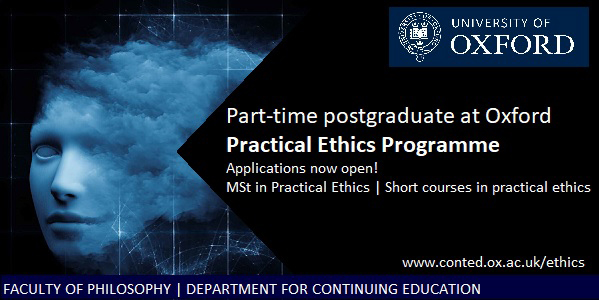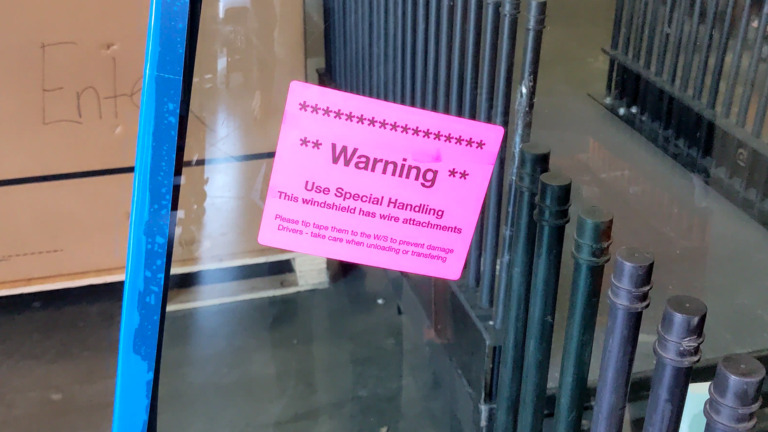* * * * *
A. Maybe you are early career or a grad student and you presented one paper four times, and two other papers one time. How should you list your presentations? The short answer is that you have options. You actually have more than two, but the two most straightforward are to list the events chronologically, which emphasizes the amount of conference activity you’ve had but risks de-emphasizing the variety in your focus, or you can list the papers as the major items, and put sub-heads on each for the times they have been presented. This way fore-fronts that you have three different papers that you’ve presented, but makes it less immediately obvious that you’ve presented seven times! Both ways are fine, they just highlight the information differently.

Some questions:
Justin asked me if he could cross-post this at Daily Nous, so, given the broader exposure, I want to emphasize that I am not an expert, this is really just reflective of one perspective on this. However, I generally think it is good to have more open discussion and advice about these sorts of implicit norms (especially when the norms are somewhat sketchy or admit of a lot of variation in the first place), so that people have a clearer sense of how to figure out what they can do without running afoul of them. Also, I did not do a survey of other advice posts or guidance that had already been written, before writing this, so I apologize in advance if I am duplicating things that have been said better by others, or other good perspectives, and would appreciate seeing links to any such pieces.
My very last note is that you will notice (if what I’ve said is right) you don’t really have a single correct snapshot CV at any given time. There are lots of different CVs that could be appropriate for you at a given time, depending on your specific purpose and who it would be for. None of them should conflict with each other, because they are all constrained by accuracy. But they might emphasize different things. Maybe one would include your course history and reading groups, and on another that would just be clutter. This only seems a weird way to talk because we normally act like there is a single thing—”your current CV”—and you just update it when you have something significant to add. And I think that’s one reason why can be so hard to answer some of the questions: they don’t have answers that make sense outside the context of specific things you would be using a CV for. Should you list your public-facing papers together with your academic work, or in a separate section? It depends who’s asking for your story.
[M.C. Escher, Emblemata Second Title Page (detail)]
Similarly the way to answer questions about how to organize the information on your CV is to ask yourself questions like:
D. Maybe some of your papers were invited and some were refereed (or some were both!). Do you list them together or separately or how to you indicate that? As with all of my answers, this is one of those things where it depends. If you are early career, people you are giving your CV to care a lot more about these distinctions, so it is important to make sure you make it easier for them to tell at a glance and don’t seem like you’re trying to sneak anything past them. You can make it super-duper obvious by separating them into different lists. Or you can keep them in one list and make sure there is very clear marking of which ones are “less” significant in the eyes of your audience, for easy discounting. Why do the latter? Looking back at question (A), maybe you want to show that you’ve been shifting from one area to another, and it’s easier to do that with the work all in one place than in two separate lists. But you still don’t want to look like you’re trying to pull a fast one. If you are later in your career where, the general process seems like it would be the same: ask yourself who is this for, and how much will they care, about this distinction, and what are you are saying presenting the information one way rather than another.
I said I would come back to hard-and-fast CV genre conventions. I am having trouble thinking of a purpose for which you would submit an academic CV where the first few blocks of information following your name are not some arrangement of the following (if applicable, and I’m not even 100% sure about the third one): a) your relevant employment history (including at least start and end years), b) your relevant education history (including at least conferral years), c) your areas of focus/specialization/competence/teaching interest. The fact that this is a conditionally applicable, disjunctive list, some of whose members I am not entirely sure of, reflects something about the flexibility of CV formats, and yet, I want to stress: these are the things where when they are supposed to be present and they aren’t, the CV seems ill-formed. (Whereas, the questions people frequently stress over, like, “can I list a talk that was canceled due to covid?” are, to me, ones with very easy answers like “yes, probably, depending on who it is for, but make sure it’s clear that it was canceled due to covid.”)
B. Maybe you had some papers published that were more public-facing and you also have a public-facing column on a blog. How do you list your public-facing work? Again, it depends! You can list all of your publications under “Research: Publications”, and then put the Blog under “Other Professional Activity”, or you can pull those out and have a separate “Public Philosophy” section of your CV. It seems like different recipients of the CV might respond differently to that depending on what the goal is (are you submitting for a job or fellowship aimed at public facing philosophy?). One note about this is that for clarity sake, if you have publications that aren’t being listed in Research: Publications”, and you think “someone may wonder why my papers aren’t all listed there!”, you could have a note (just one small italicized line under the section header) that says: “Public Philosophy papers are listed in section D”. Just subtly answer the question for them.
So I am going to offer a more general account of CVs, which can help answer the specific questions from above. People in the comments and on Twitter will, hopefully, let us all know if my perspective is wildly off base, but you should take it with a healthy quantity of salt regardless. I am, after all, just one person. If this account is correct, it will, ultimately make answering the questions above both easier and harder: Often you can make a lot of different choices, depending on what impression you want people to take away from reading your CV. This is because beyond a handful of specific genre conventions, the primary constraints are: clarity, accuracy, relevant completeness.
- a cv tells a story about your professional accomplishments
- but it can’t say everything
- you have to (get to?) organize the information on it
- you will (usually) be giving it to specific people (or groups of people)
- different audiences care about different information
- organizing information in different ways tells different stories about you
- what should be on it and how to organize it depends on who it is for and why they want it
- whatever else, your story needs to be accurate and relevantly complete
On my proposal: once we are outside the world of immutable, hard-and-fast rules about where to always to put/find information on the CV, the way to know where you should put something is to ask yourself questions like:
There are fewer hard-and-fast genre conventions than you’d think for CVs. Many things which seem like good candidates are actually just extremely sensible things to do for a very wide range of purposes you might have in making a CV. By genre conventions, I guess I mean things so widely established that you should think of violating them as something that would generally overwhelmingly flabbergast or dumbfound pretty much any reader. The easiest example of this is where to put your name and contact information. I’d find any CV that didn’t have that information as the first thing, front and center, utterly flabbergasting. I will discuss the others at the very end alongside “Serif/Sans Serif” questions.
There are lots of questions about CVs that this doesn’t answer: they turn on fully idiosyncratic and unpredictable features of the people reading them. That is, they have nothing to do with the purpose for which the CV is being evaluated or what they say about you, they have to do with whether the person reading the CVs objects to, e.g., certain types of fonts. It used to be about whether to staple or paperclip your CV. You cannot productively predict people’s preferences on this front. If someone is going to dislike your CV because you didn’t know their favorite font, or because you used the wrong sort of bullets to itemize lists or whatever, that wasn’t something you could do anything about, and no advice I could offer would have helped. I don’t think this happens all that often. If you want to know which fonts and formatting look nicest, you can either form your own personal judgments so that you like how your CV looks, or look into literature on font readability and such. The only thing I would say is very important is to make sure that whatever PDF you produce is searchable, because some people will want to see if something is on the CV by using ctrl-F, and you might as well make their life easier.
Beyond the very few immutable conventions, I think the remaining conventions are either a) specific to the purpose for which the CV is being used, or b) have more to do with issues of how easy or clear it is for the reader to find information or c) are largely better understood as being about what you want to communicate about yourself with the choices you make. Which is why it is actually hard to give clear rules that apply across the board for anyone on how to make a CV and lots of stuff is going to vary a bunch case-by-case, and maybe even for the same person depending on whether the CV is for a fellowship or a job application or just to put on their website so people can see what they’ve been up to.
Serif vs. Sans Serif
- “What places on my CV would the person/people I am giving it to expect to find it?”
- “What would putting it in one of those places or the other suggest about me/my priorities?”
Genre Conventions and Making Information Easy To Find:
- “Would the person/people I am giving my CV to be surprised/annoyed/disappointed that this information wasn’t included?”
- “What would including this information suggest about me/my priorities?”
That’s why I think the basic account can help you answer almost any question you might have about what to put on your CV, where it would go, and how to organize it. Let’s assume you have a comprehensive record somewhere of literally every professional thing you’ve ever done, neatly organized and sorted (that might be a useful thing to have, though I assume most of us don’t). You obviously don’t need to tell everyone you are giving a CV about everything on that list all the time. No one needs to hear about every reading group you attended or every time you guest lectured for a professor when you were their TA and so on. But: there might be times where some of that information is relevant to include, or valuable to find a way to include. Any CV you make is going to be some compressed presentation of that Comprehensive Record of Everything You’ve Done. It will omit some things, highlight others, make choices about how to group things together and label them, etc. If everything you do is very easy to pigeonhole, you will never have any questions about where to put things on a CV, because you can just steal someone else’s CV template and go wild. But what’s happened there is that a bunch of choices got made, and they may well be fine for you, but they got made. That CV tells a story. And probably, eventually, you’ll have something that doesn’t quite fit, or raises some questions.
- “Would the person/people I am giving my CV to have an easy time finding the information they want to know, if I group things in this way?”
- “Will the person/people I am giving my CV to be able to easily tell the difference between times I was the main contributor and times I was not the main contributor, if I present the information this way?”
- “What would presenting the information this way suggest about me/my priorities?”
A good reason this is an immutable genre convention is that there is no purpose and no audience for whom it would make any sense not to have the information “who does this CV belong to?” the easiest information for them to get from your CV (you probably even want your name to be in a footer or a header so that it’s easy for them to know it’s your CV no matter what page they are looking at). But this follows from a more general principle: audience attention is a scarce resource. Once you get past the realm of hard-and-fast conventions your choice of ordering impacts how likely someone is to see information, and that’s why it tells the reader how important you think it is (the same goes within sub-sections).
At the start, I want to mention briefly not why you should listen to me, but how you should contextualize my advice: I’m an associate professor, so I’ve made and updated my share of CVs, I’ve done grad admissions many times, I’ve sat on a fair number of search committees, and I’m on a college-wide committee in which some philosophers’ (and non-philosophers’) CVs are reviewed by colleagues across many disciplines, and so I’ve seen a lot of CVs in a lot of different contexts, and I’ve heard a lot of opinions about CVs.
“One of the many things we don’t usually teach people how to do in our profession is construct a CV.”
The very short answer to most questions about your CV is that it should be clear, accurate, and relevantly complete, and if it is, you don’t need to stress. Of course, the devil is in the details, and you’ll notice that this post is more than one short paragraph, but it seemed worth giving you some version of the “TL;DR” up front.
C. Maybe you have a paper under review and it is really good, but it hasn’t been accepted yet. Can you list it in the section labeled “Publications”? No. That section is for papers that are published or (in our field) past all of the relevant editorial barriers to publication (i.e. at least “forthcoming”). You can have a section labeled “Research, which has subsections like “publications” and “works in progress and under review” and you can list your works in progress and your works under review in that latter section (because that is accurate/not misleading). But there is a very high chance that you will rub people the wrong way by listing things that are under review among your publications (even if you disagree with me about whether it is inaccurate, I think you should defer to me on whether my view is sufficiently widely held).
Sometimes we tell people to go look at a handful of examples and then make a CV that looks sort of like that. This isn’t an entirely horrible way for people to start working out some of what works and doesn’t for themselves (it’s a slight improvement on everyone deducing CV-ology from first principles). Basically it is a haphazard way for people to observe and internalize some existing CV norms (presuming they looked at a fortunate sample of CVs), but it’s not a great process for understanding what we are doing or why, or helping us answer questions like “what do I do if I have an unusual item to include”?

My general account begins with this:
So writes Lewis M. Powell, associate professor of philosophy at the University of Buffalo, in the following guest post*, in which he provides some advice about putting together a curriculum vitae. A version of the post first appeared at his blog, Horseless Telegraph.
Similarly, the way to determine whether you should put something on your CV is to ask yourself questions like:
Very often, I see people asking questions about their CVs—is it okay to list this thing I did on my CV? Does this important thing I did go under research or service, or somewhere else? etc.—and one interesting feature of this is that the people I see asking are at all stages of their careers. I think this happens because one of the many things we don’t usually teach people how to do in our profession is construct a CV. That’s because constructing a CV isn’t doing philosophy, and we mostly like to focus on teaching people how to do philosophy (or sometimes the teaching part even drops out, and we just like to do philosophy). Also, for obvious reasons of recursion, the people doing the training often don’t really know how to teach people things like “how to make a CV” since they were only ever trained in how to do philosophy and, well, you see where this is going (I imagine that I am overgeneralizing a bit about the sociology of the discipline based on the parts I have been exposed to, and I am fortunate that we had some (extracurricular) training in my grad program from our diligent director of graduate studies about these things).





